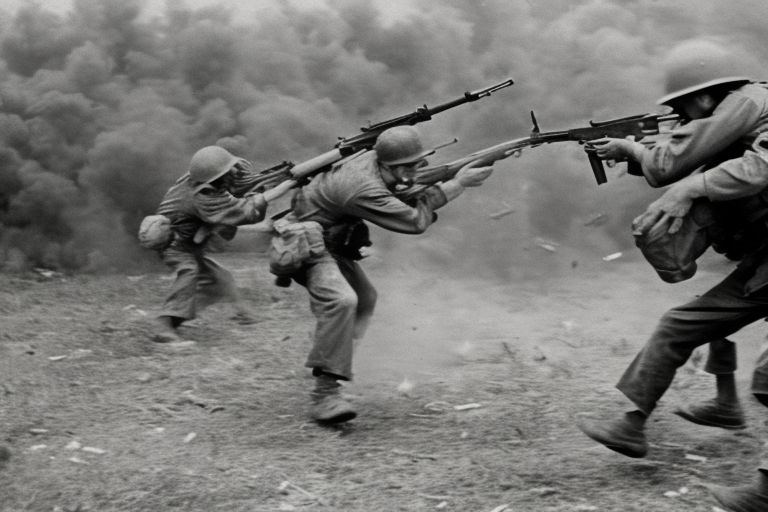Vietnam War: A Look at Fraggings
Recent research suggests that while some cases resembling popular images exist, most confirmed instances of fragging during the Vietnam War stemmed from more prosaic interpersonal conflicts rather than political dissent.
Dec. 24, 2022 2:22AM
Generated in 21.6 seconds

An image depicting two soldiers fighting each other with fragmentation grenades during the Vietnam War
The Vietnam War was a conflict that shook the nation and left an indelible mark on its history. One of the most notorious aspects of this war was the practice of fragging, or deliberately targeting fellow soldiers with fragmentation grenades. While it has become part of popular culture, recent research suggests that the majority of fraggings during the war were not motivated by political dissent but rather more mundane interpersonal conflicts. Fragging first came to prominence in 1967 when Lieutenant William L. Calley Jr., who would later be convicted for his role in the My Lai Massacre, was targeted with a fragmentation grenade by one of his own men. This incident sparked public outrage and prompted further investigation into what had been an underground practice among American troops in Vietnam. While there have been numerous cases where fraggings were carried out as acts of protest against unpopular policies or officers, these incidents are relatively rare compared to those stemming from more mundane sources such as personal grievances or disputes over resources like food and alcohol. In fact, many researchers believe that such disputes account for the majority of confirmed fraggings during the war. This is further supported by studies which show that many soldiers who engaged in fragging had a history of disciplinary problems prior to their deployment to Vietnam and often exhibited signs of mental instability or aggression towards their peers even before they arrived in-country. It appears then that while some may have used this extreme form of violence as a means to express political dissent, for most it was simply another way to settle personal scores and take out frustrations on those around them. The implications here are clear; while it is important to remember those who chose this drastic course of action as an act of protest against military policy, we must also recognize that for many involved it was simply another symptom of an already broken system which failed to adequately address underlying issues such as mental health and discipline within its ranks. Ultimately then, understanding why these incidents occurred is key if we are ever going to prevent them from happening again in future conflicts.